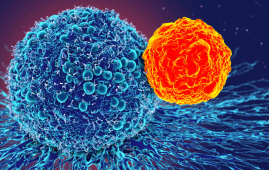

The world’s fastest-growing brain disorder, Parkinson’s disease, may be fueled by a typical and often-used drug. Trichloroethylene (TCE) has been used to dry clean textiles, degrease metal, and decaffeinate coffee for the past 100 years. It contaminates up to one-third of the groundwater in the United States, 15 toxic Superfund sites in Silicon Valley, the Camp Lejeune Marine Corps facility, and other locations. TCE causes cancer, is linked to miscarriages and congenital heart disease and is associated with a 500% increased risk of Parkinson’s disease.
The University of Rochester Medical Center’s (URMC) neurologists Ray Dorsey, MD, Ruth Schneider, MD, and Karl Kieburtz, MD, along with an international team of researchers, hypothesize that TCE might be an unnoticed cause of Parkinson’s in a report published in the Journal of Parkinson’s Disease.
In the article, they discuss the chemical’s widespread use, the evidence connecting it to Parkinson’s, and they profile seven people who either developed Parkinson’s disease after working with the chemical or after being exposed to it in the environment, including a former NBA basketball player, a Navy captain, and a late U.S. senator. TCE was a common solvent used for a variety of industrial, consumer, military, and medical purposes, such as removing paint, fixing typos, cleaning engines, and anesthetizing patients. During the 1970s, when two pounds of the chemical were produced by each American, its use in the country reached its apex. Ten million Americans were employed by companies that used chemicals or other industrial solvents.
While residential use has since dropped, TCE is still used for degreasing metal and spot dry cleaning in the U.S.
Several locations around the nation have TCE contamination. TCE is present in half of the most dangerous Superfund sites listed by the Environmental Protection Agency. The chemicals were utilized at fifteen locations in Silicon Valley, California, to clean devices and computer chips. Several military installations, notably Camp Lejeune in North Carolina, include TCE. A million Marines, their families, and civilian employees and residents of the base were exposed to drinking water levels of TCE and perchloroethylene (PCE), a chemical closely related to TCE, that was up to 280 times above what is regarded as safe levels between the 1950s and the 1980s.
More than 50 years ago, case studies made the first mention of a link between TCE and Parkinson’s. In the following years, studies in mice and rats have demonstrated that TCE easily penetrates the brain and other body tissues and, at high dosages, harms the mitochondria, the cell’s powerhouses. TCE selectively destroys dopamine-producing nerve cells in animals, a characteristic of Parkinson’s disease in people.
Those who had direct contact with TCE had a higher risk of getting Parkinson’s. Millions more people, the authors caution, come into contact with the chemical inadvertently through contaminated groundwater, indoor air pollution, and outdoor air.
The chemical can pollute soil and groundwater leading to underground rivers, or plumes, that can spread over large distances and migrate over time. One such plume related to an aerospace business on Long Island, New York, is nearly four miles long and two miles wide, and has poisoned the drinking water of thousands. From Shanghai, China, to Newport Beach, California, one can find others everywhere.
Despite their dangers to water, the flammable TCE can easily evaporate and infiltrate people’s residences, educational institutions, and places of employment, frequently undetected. Millions of people now who live, learn and work close to former industrial, military, and dry cleaning sites are probably being exposed to harmful indoor air as a result of this vapor intrusion.
When radon was discovered to evaporate from soil, infiltrate dwellings, and raise the risk of lung cancer, vapor intrusion was first noted. Nowadays, millions of houses get radon tested, but few are TCE tested, which causes cancer.
The article examines seven people whose Parkinson’s condition may have been exacerbated by TCE. While the evidence linking TCE exposure to Parkinson’s disease in these individuals is circumstantial, their stories highlight the challenges of building the case against chemicals.
In these situations, the interval between TCE exposure and the onset of Parkinson’s symptoms is frequently decades.
The professional basketball player Brian Grant, who played for 12 years in the NBA and was diagnosed with Parkinson’s disease at the age of 36, is one of the subjects of the case studies.
Grant established a charity to encourage and assist those who are afflicted.
While serving as a young Navy captain at Camp Lejeune, Amy Lindberg was also exposed to tainted drinking water and was ultimately given a Parkinson’s disease diagnosis 30 years later. The article describes further people who were exposed as a result of residing near a contaminated site or dealing with the substance, including the late U.S. Senator Johnny Isakson, who resigned from office in 2015 after receiving a Parkinson’s diagnosis. He had been a member of the Georgia Air National Guard, which utilized TCE to clean airplanes, fifty years prior. The authors note that “for more than a century, TCE has threatened workers, polluted the air we breathe—outside and inside—and contaminated the water we drink. Global use is waxing, not waning.”
The authors proscribe a number of activities to address the public health concern posed by TCE. They point out that contaminated sites can be successfully cleaned up, and vapor remediation technologies, like those used for radon, can reduce interior air exposure. Yet, the cleaning and containment procedure needs to be sped up because the United States alone is home to thousands of polluted sites.
They call for greater research to better understand how TCE relates to Parkinson’s and other disorders. TCE levels in soil, groundwater, drinking water, and outdoor and indoor air need to be monitored more closely, and people who live and work close to polluted sites need to be informed of this information.
In addition, the authors call for finally ending the use of these chemicals in the U.S. PCE is still widely used today in dry cleaning and TCE in vapor degreasing. Two states, Minnesota and New York have banned TCE, but the federal government has not, despite findings by the EPA as recently as 2022 that the chemicals pose “an unreasonable risk to human health.”
more recommended stories
 T-bet and the Genetic Control of Memory B Cell Differentiation
T-bet and the Genetic Control of Memory B Cell DifferentiationIn a major advancement in immunology,.
 Ultra-Processed Foods May Harm Brain Health in Children
Ultra-Processed Foods May Harm Brain Health in ChildrenUltra-Processed Foods Linked to Cognitive and.
 Parkinson’s Disease Care Advances with Weekly Injectable
Parkinson’s Disease Care Advances with Weekly InjectableA new weekly injectable formulation of.
 Brain’s Biological Age Emerges as Key Health Risk Indicator
Brain’s Biological Age Emerges as Key Health Risk IndicatorClinical Significance of Brain Age in.
 Children’s Health in the United States is Declining!
Children’s Health in the United States is Declining!Summary: A comprehensive analysis of U.S..
 Autoimmune Disorders: ADA2 as a Therapeutic Target
Autoimmune Disorders: ADA2 as a Therapeutic TargetAdenosine deaminase 2 (ADA2) has emerged.
 Is Prediabetes Reversible through Exercise?
Is Prediabetes Reversible through Exercise?150 Minutes of Weekly Exercise May.
 New Blood Cancer Model Unveils Drug Resistance
New Blood Cancer Model Unveils Drug ResistanceNew Lab Model Reveals Gene Mutation.
 Healthy Habits Slash Diverticulitis Risk in Half: Clinical Insights
Healthy Habits Slash Diverticulitis Risk in Half: Clinical InsightsHealthy Habits Slash Diverticulitis Risk in.
 Caffeine and SIDS: A New Prevention Theory
Caffeine and SIDS: A New Prevention TheoryFor the first time in decades,.

Leave a Comment